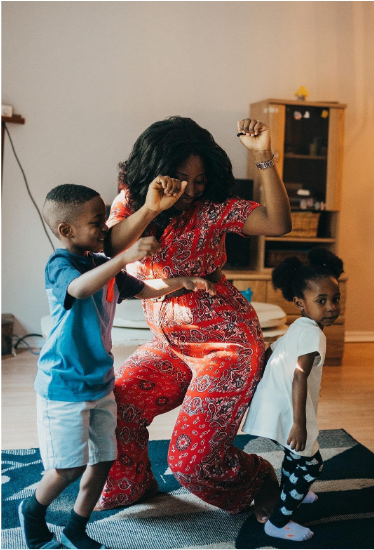Learning Through Play
Here at Philly & Friends HQ, we love engaging with other parents, carers, educators and those interested in child development. We are firm believers of the African proverb which says "It takes a village to raise a child".
Since I published my first children's book, Who Do I See in the Mirror?, I have met so many amazing women (and men!) doing remarkable things. We have shared tips, ideas, hugs (virtual and physical), encouragement and much more. There's such a great online community of men and women championing each other's lives, businesses, achievements, and so on. To celebrate this, we will be featuring articles from some of the lovely people we have met on our journey.This feature is one of a remarkable woman, Petra - an educator and a mum to three amazing kids. She has insightful thoughts and ideas about play-based learning and in this post, she takes us on an inspirational journey centered around her personal experiences. Enjoy!
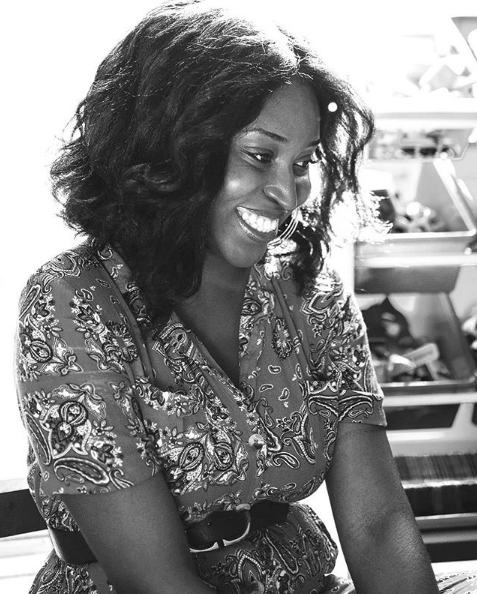
Learning through play means different things to different people. I believe play is every child’s fundamental human right. It is essential to the development of the child cognitively, physically and emotionally. I’ve recognised first hand the benefits of play-based learning across children of different works of life. Being an Early Childhood Educator, I have worked with children aged 0 to 6 and I have seen how children blossom and thrive when their play ideas and choices are respected and recognized.
Alternatively, in my home where I spend most of my days now that I’m on maternity leave, I have seen my 4 year old, 2 year and 6 month old grow into active collaborators and contributors to each other’s learning. In their play space, my 2 year old daughter was bent over a pile of blocks trying over and over again to get them to stack up and my son reached over and offered to help her stack them. He explained why certain blocks cannot be at the bottom of a tower and how to angle others to properly support the structure. This teaches her planning and shape relations.
To facilitate her learning, I, in turn, build on that experience and set up an activity where I provide her with different materials to stack and build. Plastic bowls, empty thread spools, empty coffee cans, paper towel rolls etc. By doing this, I’m telling her that what she does has value. It makes her feel seen, heard, and confident. Not to mention the problem solving and spatial awareness skills she picks up from the activity.
When Elnathan (4 year old son) and I are playing a card game, he learns about taking turns. Even though I could let him win every time, I play fairly and let him lose. This not only challenges him but it also teaches him coping skills. Like how to appropriately express sadness, disappointment and anger. This sharpens his emotional intelligence. It also gives him an opportunity to learn the joy of playing for fun. As a competitive person, I often recognise that same competitive streak in my son and so I have begun to teach him a little mantra we say whenever we play games, “Win or lose.. we’re still having fun!”, and then we high five and try again.
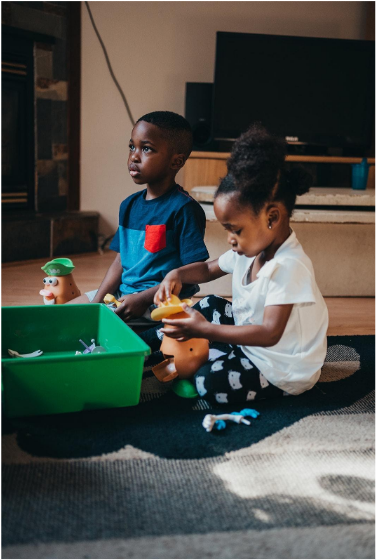
Children’s natural curiosity and desire to explore, play and inquire are the fuel to the fire of their learning. So it goes without saying that, we best support them when we as parents and caregivers engage children in the play. When we listen, ask questions, and notice their learning.

To tell the truth, one of the most important roles in what and how a child learns is their play environment. An ideal learning environment is flexible and makes creative use of space and materials. My house is not particularly generous with floor space, however, I have seen corners of the staircase turned into a pirate ship one day and a space station the next. The space between the couch and the wall often makes for a good hiding spot in a game of hide and seek. And my couch cushions are constantly being rearranged to build forts and castles. Even just the window sill provides a choice for a quiet reading spot. Often, the people who walk by our window, vehicles that drive by, and the change in seasons, will influence their play scenarios. All of these things teach them about the world around them.
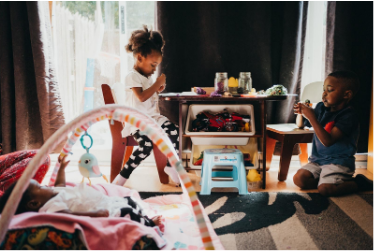
Another way to utilize your environment is to create areas of interest around the home where they can safely explore their ideas and learn new skills. For example, child sized furniture and an art corner with supplies they can safely use independently. Having a diverse selection of drawing and writing tools available also helps a child grow a love for writing. Some tools my kids are in love with are water colours, magnetic white boards and white board markers, chalkboards, easels, sand trays. and tiny notebooks. I also find that open shelving for toys and books stored at children's level are brilliant. It allows kids to fully and frequently access what’s available for play both visually and physically.
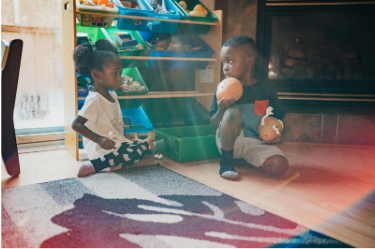
It’s all about giving them multiple ways to explore, take risks, solve problems, negotiate, and create - all the important building blocks for learning. So, if you're looking for more play inspiration then jump on board with any of the play based activities and tips that I share on my Instagram page, @_p3tra_. I enjoy talking about play based learning, home-schooling and the mom life. It’s an opportunity to enjoy the general craziness of our endless days of play.
